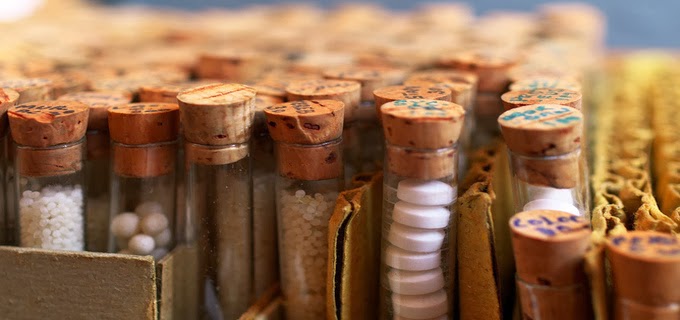Drosera is a plant which is carnivorous in nature (it devours insects). Its leaves have a reddish, hairy structure on the surface, which produce a secretion to attract insects and helps to digest them. This secretion glitters like dew in the sunlight. The leaves remain spread on the surface of the ground. As soon as an insect comes near they immediately close and the insect becomes their food. In the 16th century, Drosera became very famous in the treatment of tuberculosis, but it killed more people than it saved from the disease.
Besides tuberculosis, it was
also used for the treatment of toothache, insanity and problems related to
childbirth. In homoeopathy, the
medicine is prepared from an extract of the plant and is commonly used for the
treatment of cough. Its use has mostly been restricted to whooping cough. It has a
much wider range of action in the treatment
of convulsive disorders. Drosera is not only of use in coughs, but
is also used for the treatment of convulsions related to other diseases.
Therefore, it is also useful in the treatment of epilepsy. The Drosera patient
becomes very worried and anxious after the convulsion and the subsequent
unconsciousness. Drosera is a very highly effective remedy for the treatment of
this confusion, perhaps an aftereffect of the convulsion.
Drosera should also be used in the treatment of menopausal syndrome because
the symptoms of Drosera are very similar to that of menopause, such as flushing
of the face, selective congestion of any part of the body and restlessness.
A Drosera patient is afraid of being alone and suspicious. He will
not even trust his close friends. Such symptoms are also
seen in the case of medicines prepared from snake venom. A patient of
the constitution of Drosera is the victim of superstitions. He is restless, cowardly and a pessimist as well as extremely irritable.
There is headache, especially over the forehead, which radiates outward through the cheekbones. The patient feels dizzy in the open
and has a fear of falling on the left side. A feeling of severe cold
and a stinging pain on the left side of the face while the right side of
the face is dry and warm, are all typical features of Drosera. Drosera may be of use to treat the cough
arising out of irritation inside the windpipe after taking food.
An epidemic
cough spreads wide during the formation of pods on the wild Acacia
trees, Drosera is very useful in treating this cough. In Drosera, the windpipe
feels tight and contracted. Drosera is very useful for the treatment of the
cough associated with constant irritation in the throat, which is not relieved
even after coughing. Any kind of cough which starts after midnight or which
gets worse on talking will respond to Drosera. In children, bouts of whooping cough come on as
soon as the child puts his head on the pillow, and then continue for two to
three hours. Constant coughing makes them exhausted and there is no relief.
If such a patient contracts fever, he feels very cold and shivers. The face
is flushed, while the hands become cold. There is complete absence of thirst.
Typically, the Drosera cough becomes worse on lying down, laughing and singing
or due to the warmth of the bed.





